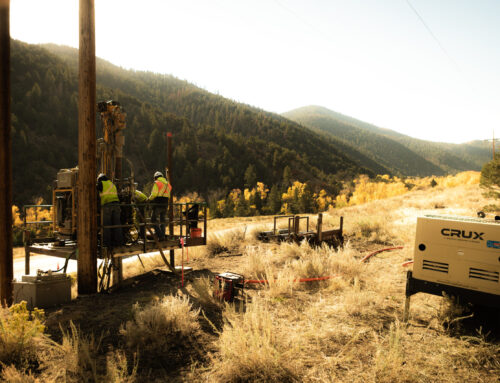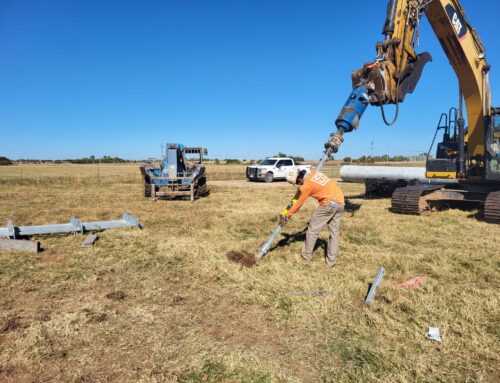
Specialty Foundation Design & Construction
The Devers-Palo Verde No. 2 Transmission Line Project (DPV2) entailed the construction of two new 500 kV transmission lines within existing corridors: the 111-mile Colorado River Segment, and the 42-mile Valley Segment. The project traverses multiple jurisdictions, including federal land administered by the U.S. Bureau of Land Management, Forest Service Lands, a wildlife refuge, and private properties. Permitting the project required close coordination with the BLM and California Public Utilities Commission (CPUC).
Team Members
Southern California Edison
PAR Electrical Contractors
Crux Subsurface
Crux’s Role
Crux provided 100% design-build micropile foundations for all lattice tower sites requiring helicopter access. This included 10 tower foundations on the Colorado River Segment, 33 tower foundations on the Valley Segment and 13 permanent helipad foundations on the Valley Segment. All were deemed as helicopter-only sites due to the rugged terrain and inability to construct access roads. Micropile foundations were selected as an alternative to concrete drilled shafts in these locations because they can be installed using lightweight, helicopter-portable equipment.
Crux-Beretta componentized spin drills were transported to tower sites by helicopter. The drills were placed on leveling platforms, allowing for reduced site excavation and a smaller environmental impact. Arrays of between three and twelve piles were installed per tower leg, depending on subsurface conditions and tower loads. Six piles were installed for each permanent helipad. Concrete caps were constructed for all lattice tower foundations and a steel plate design was utilized to bolt the helipads to the piles.
Project Challenges
Specific challenges included environmental regulations and unpredictable weather. Traversing a number of regulated areas, construction schedules were impacted by protected species and surrounding habitats. Additionally, weather delays caused primarily by high winds totaled 1238 hours (approximately 118 working days) by the end of the project. Helicopters were grounded during these delays, inevitably affecting the critical path of construction activities.







